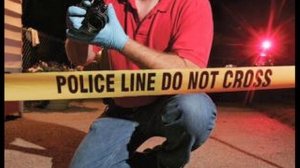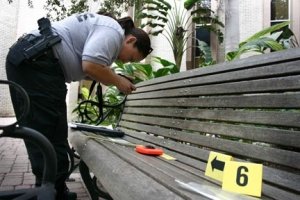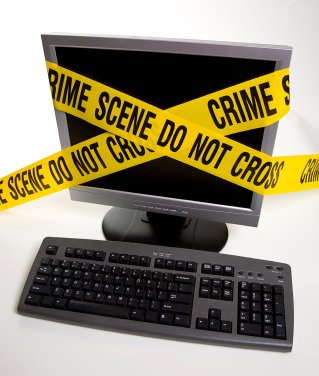Forensic photography is not like they show it in the CSI series. Reproducing accurately a crime scene or an accident scene requires a special sense of technicality, method and subtlety as the photographs are used either in court or as a tool to help the investigating process itself. It’s both a science and an art… but mostly, a science.

There are many things you need to get those perfect photos which can make the difference – correct lightning, accurate angles of lenses and multiple viewpoints are used by the investigator who is in charge with the items recorded and their exactitude and faultlessness. At least CSI movies have this right – the crime scene photos are at least sometimes extremely important in the investigation process. Also, you can’t afford to make any mistakes – because you’re not only ruining someone’s day, you’re potentially ruining an entire criminal case.
There are three types of forensic photographs, after the specificity level of the items they depict (how zoomed-in they are):
• Overview. If the accident or crime happened inside the setting of a building for instance, the overviews would be made of the surroundings and the localization of the place, as well as all the access points. Pictures of different subjects at the crime spot can help identify, locate and contact the suspects and the witnesses of the event. Imaging the rooms of the building and the views from there is also part of the overview level.
• Mid-range. The accuracy in taking those pictures is a vital part of a forensic approach since they have to be put in connection to other elements of the setting that are related to or might help solving the case. A gun on the floor for example is more relevant when connected to the bullets or a blood stain. Although it is the main element from the photograph, it is highly relevant for it to suggest a context in which it could have been used / implied in the crime or accident.
• Close up. These are the most specific types of images that a forensic photographer has to record. Their most apparently insignificant details have to be encrypted into the photos so that they can be used when and if needed. The images are taken in at least two copies of which one would have measurements to indicate distinct characteristics of it and the other one is kept in case the measurements on the photograph cover important details of the object. The most important clues of close ups are the marks that make the objects/subjects (corpses, for instance) identifiable – scratches, distinct features, traces of any kind.

There are some special items that have to be carried whenever going to the crime place. Besides the obvious camera, filters and electronic flashes, the special equipment need to contain as well: distinct lenses for wide-angle, as well as for mid-range and close-up instancing, the measuring device for the close ups as well as a grey card along with a light meter to produce the correct illustrating the objects good enough to be usable in court if necessary.
These are the basics that any forensic photographer should carry, together with any other tools that can help precision and allow not to alter the proof. Concerning the image characteristics colorwise, most of the investigators prefer the colored pictures, but there are some special cases in which black and white photographs are more likely indicated as useful – such as when the texture and not the color is more relevant and suggestive, for instance when looking for fingerprints that can be observed with the naked eye, in order to be sent for forward compatibility analysis.
The tedious process of solving a crime can be turned into hell by taking the photographs in a wrong, inappropriate manner, up to the case where the images are not acceptable as evidence in court.
When accepted in court, the images are not only useful as evidence, but as a contextualization of the crime scene as well. A road traffic incident needs visual evidence to sustain the speeches such as traces and marks of the traffic collision. The close ups need to point out serious damage to sustain the demarche in front of the court, but the site has to be preserved on the collision state until all the evidence is taken (including the images), according to the Secure Digital Forensic Imaging methods in use.
One of the most controversial cases is the cause of Tay Bridge disaster when half mile section of the bridge collapsed in the storm taking a train into the estuary of Tay river. It was only in 1999-2000 when the photographs have been digitized to show the critical details. Contextualized, the cause of the incident seemed to have changed. Up until today, the official solution of an accident that took place back in 1879 was only finished according to the new technological breakthroughs a few years ago.
All in all, this seems like quite a big load of information, but the truth is, a lot of this comes with experience. Even the best photographer still has to take some time to adjust to the rigors of forensic photography, but even the most novice can, in time, learn the ins and outs of this job.



